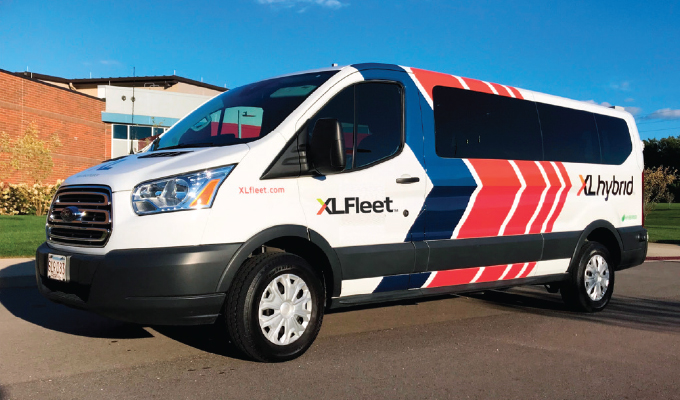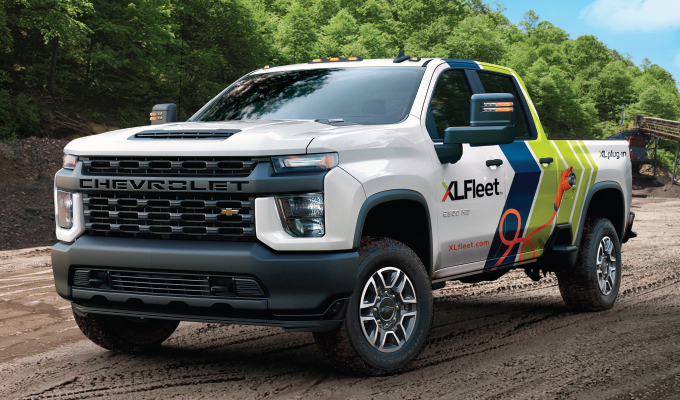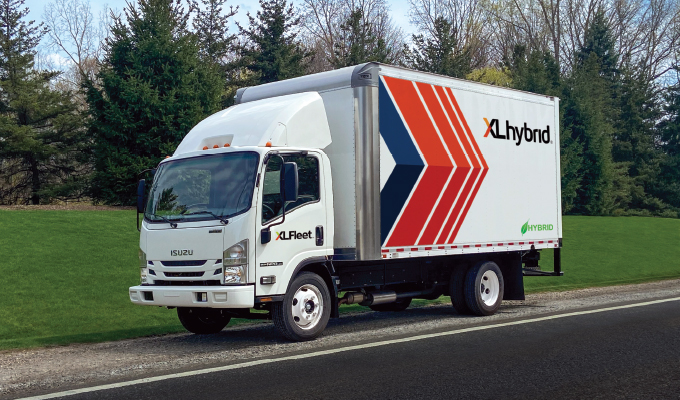Electrify, electrify, electrify. It’s a theme that’s surrounded the fleet industry for years, but when will it happen, and what will it take to get us to fully electrified vehicles being more broadly available? Thankfully there is one company on the cutting edge of sustainable fuel technology, XL Fleet, who answered all our important questions on the subject.
WHAT DOES THE CURRENT REALITY OF THE EV SPACE LOOK LIKE IN THE USA?
ERIC FOELLMER, XL Fleet:
I think it’s safe to say that demand is largely outpacing supply—even if supply is catching up. There is a tremendous and growing demand for electrification and EV fleets in particular. This is going to be a long transformation before electrified propulsion becomes the norm and not the exception. There’s no single technology that will flip the switch on that process. There’s currently more product availability on the consumer side; however, on the fleet side it’s still a work in progress. But there is a lot of energy and commitment on multiple levels of the supply chain to make this happen for fleets. So, the demand and supply are starting to align with one another, and there’s a lot of progress being made. Although, most experts expect that transition to be a multi-year or even a multi-decade process.
DO YOU EXPECT TO SEE THE GOVERNMENT’S SUSTAINABILITY GOALS BECOME REALITY BY THEIR TARGETED DATE?
FOELLMER: That depends on the specific goal. Fully electrifying the entire federal fleet in 10 years is certainly an ambitious goal, but we need ambitious goals to drive the urgency and adoption that’s needed to move the industry forward. You can’t displace a century-old, gasoline-powered infrastructure overnight. Especially since some applications don’t lend themselves well to full electrification. If you want to electrify a full fleet, you have to take into consideration that there are other electrification technologies that are going to be needed to meet those goals, such as hybrids, plug-in hybrids, and fuel cell electric technologies.
Replacing the entire federal fleet with all-electric vehicles in 10 years may be unrealistic, but electrifying a significant portion of the federal fleet in that time frame using the full range of technologies available is a more realistic expectation. XL Fleet has currently logged over 150 million customer miles driven on our hybrid and plug-in hybrid systems, establishing a strong foothold in the industry. Those 4,000-plus vehicles help drive adoption of more fully electrified vehicles. Over time, drivers and maintenance teams will become more accustomed to these technologies and will become more willing to adopt them in larger volumes.
As XL Fleet continues to introduce a broader range of medium- to heavy-duty hybrid and plug-in hybrids as well as full-electric options, we can support a full life cycle of what fleets need to move forward with their goals right away.

WHAT IF THE BIDEN INFRASTRUCTURE PLAN DOESN’T PASS? WILL THAT SET EV AND SUSTAINABLE FUEL GOALS BACK?
FOELLMER: I don’t think it will substantially set the industry back. OEMs have made commitments, there’s growing demand in the industry, and there are strong commitments on the charging side. The infrastructure plan is a great way to support that effort, but I think the demand is now at a point where it can grow organically with or without vast incentives. XL Fleet’s technology is applicable and affordable even without incentives, so from XL Fleet’s perspective it wouldn’t make a tremendous difference. If the plan doesn’t pass, it could prolong the timeframe, but it won’t set the industry back to square one.
WHAT OBSTACLES MUST WE OVERCOME IN ORDER TO SEE EVs MORE WIDELY ADOPTED?
FOELLMER: The three biggest obstacles I see are: 1) the need for more charging infrastructure—the lack of infrastructure has been a significant deterrent to a more wide scale EV adoption; 2) the need for more vehicles available for fleets—to date, there has been a lot of demand but not a lot of supply; and 3) the price point needs to more comparable to a traditional combustion engine. If you’re not normalizing the price point, it makes it more challenging for fleets to adopt sustainable vehicles.
WHAT SOLUTIONS DOES XL FLEET HAVE TO COMBAT THE THREE BIGGEST OBSTACLES YOU MENTIONED?
FOELLMER: To overcome the lack of a comprehensive nationwide charging infrastructure, XL Fleet’s hybrid and plug-in hybrid systems can be deployed with little or no additional charging requirements beyond what many fleets already have in place. Hybrids require zero external charging, and plug-in hybrids can often be plugged into standard power outlets or level 2 wall-mounted units. That has helped drive our strong customer base and quicken the adoption of the more fully electrified options to follow. When it comes to a lack of EVs available to fleets, XL Fleet’s solution is to electrify existing OEM vehicles that fleets know and trust to help drive deployment. To combat the third largest obstacle, XL Fleet sought to create one of the most cost-competitive systems on the market. XL Fleet’s hybrid and plug-in hybrid systems don’t have price points of fully electric vehicle options and don’t require the costs associated with new charging infrastructure. The net result of our solutions is that we give customers the ability to pursue their sustainability goals right away without having to wait for these other external challenges to be solved.

WHAT DOES A FLEET OF XL VEHICLES LOOK LIKE?
FOELLMER: Because XL Fleet designs its systems for existing fleet vehicles, the performance, maintenance, and warranties of an electrified vehicle from XL Fleet are almost identical to that of a standard gas- or diesel-powered vehicle—it’s just more sustainable. An XL Fleet system installation doesn’t replace the engine—it simply electrifies the powertrain by attaching a motor to the drive shaft to provide an electric assist during acceleration. As a result, it works in parallel with the internal combustion engine. Therefore, mechanics see little to no difference in vehicle maintenance.
Finally, XL Fleet systems don’t disrupt the OEM warranty, which is a significant difference from other approaches where the OEM warranty could be voided. The XL Fleet system carries a warranty, as well. And if the XL Fleet system goes down, the vehicle can still operate as a gas-powered vehicle, eliminating downtime.
FOR MORE INFORMATION
Eric Foellmer is the marketing director at XL Fleet. Find out more about fleet electrification technology available for your fleet today, visit www.xlfleet.com.




